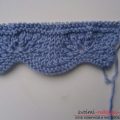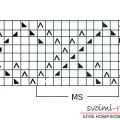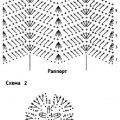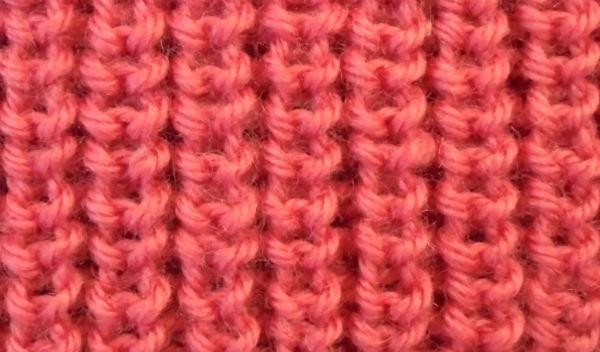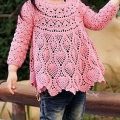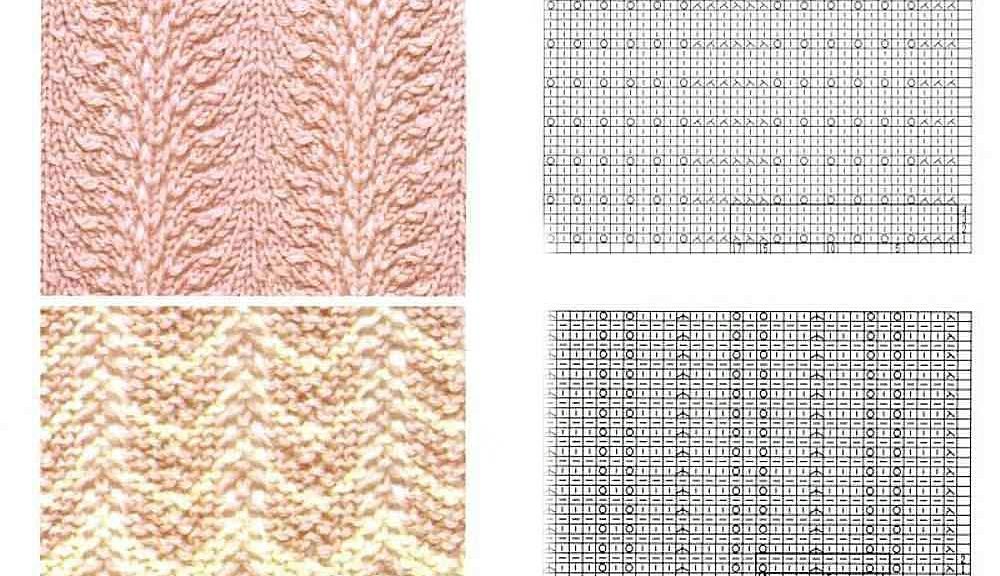
Knitting with knitting needles wavy pattern, openwork wavy patterns with knitting needles for making blouses and dress for women, using with it patterns and detailed descriptions, you can download them for free.
Wavy knitting pattern:learn quickly and easily In this article we will tell you about the features of knitting wavy patterns. I would like to immediately note that with the help of such a pattern you can create spectacular clothes. That is why many designers have been using products knitted with wavy patterns in their collections for decades. This pattern looks very original and elegant if you use section-dyed yarn to knit it. Then you can strengthen the “waves” in the drawing by focusing on brightly colored yarn. One of these wavy patterns is consideredeveryone's favorite “peacock tail”. It can quite often be found not only as the main design, but also as an effective insert into any product. Among other things, the structure of “waves” very good for creating edges on things.
One of these wavy patterns is consideredeveryone's favorite “peacock tail”. It can quite often be found not only as the main design, but also as an effective insert into any product. Among other things, the structure of “waves” very good for creating edges on things.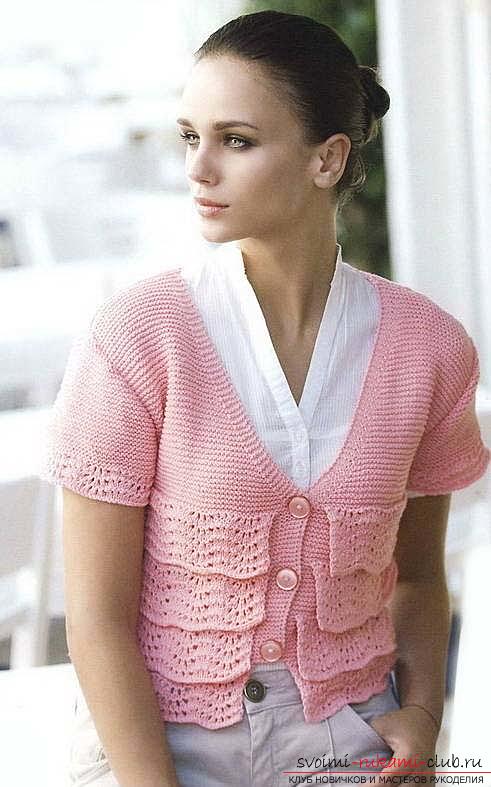 Organic also gives an amazing effect.a combination of a wavy pattern with other types of openwork. Features of knitting this pattern: To add loops in a row, you need to create 1 front and one cape: repeat this combination six times (as a result, there will be twelve out of six loops). We alternate adding loops with decreasing them. To do this, we knit the 2nd knit stitches together with a bias to the left side. You need to do this three times (in the end, out of twelve loops you will get six). It is this row that forms a wave-like pattern. Schemes quite often suggest a certain inaccuracy in the process of knitting: where it is necessary to decrease the loops, there is a symbol indicating the need to knit two loops together. But in reality, the slope of these loops will be different: three loops slope to the left, the remaining three loops – slope to the right.
Organic also gives an amazing effect.a combination of a wavy pattern with other types of openwork. Features of knitting this pattern: To add loops in a row, you need to create 1 front and one cape: repeat this combination six times (as a result, there will be twelve out of six loops). We alternate adding loops with decreasing them. To do this, we knit the 2nd knit stitches together with a bias to the left side. You need to do this three times (in the end, out of twelve loops you will get six). It is this row that forms a wave-like pattern. Schemes quite often suggest a certain inaccuracy in the process of knitting: where it is necessary to decrease the loops, there is a symbol indicating the need to knit two loops together. But in reality, the slope of these loops will be different: three loops slope to the left, the remaining three loops – slope to the right.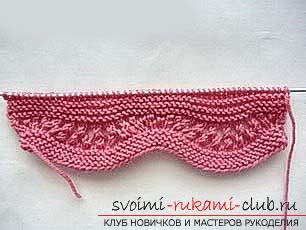
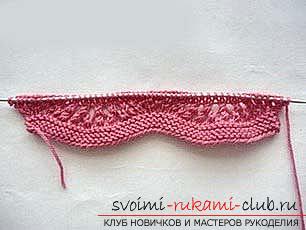
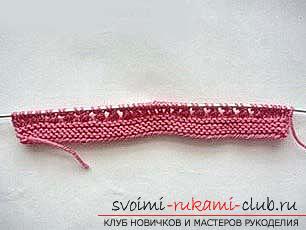
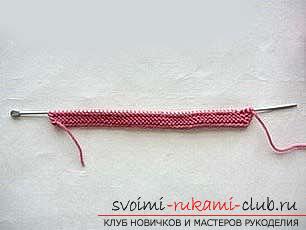 When creating this pattern, like any openwork pattern,It is imperative to ensure that the number of yarn overs in a row corresponds to the number of two loops that are knitted together. Also remember that you need to start knitting such a pattern with 3 increasing or decreasing stitches, but not with six. Otherwise, the knitting of your fabric will turn out to be diagonal, as if at the beginning of all the rows you added one loop, and when completing the row, you decreased it.
When creating this pattern, like any openwork pattern,It is imperative to ensure that the number of yarn overs in a row corresponds to the number of two loops that are knitted together. Also remember that you need to start knitting such a pattern with 3 increasing or decreasing stitches, but not with six. Otherwise, the knitting of your fabric will turn out to be diagonal, as if at the beginning of all the rows you added one loop, and when completing the row, you decreased it.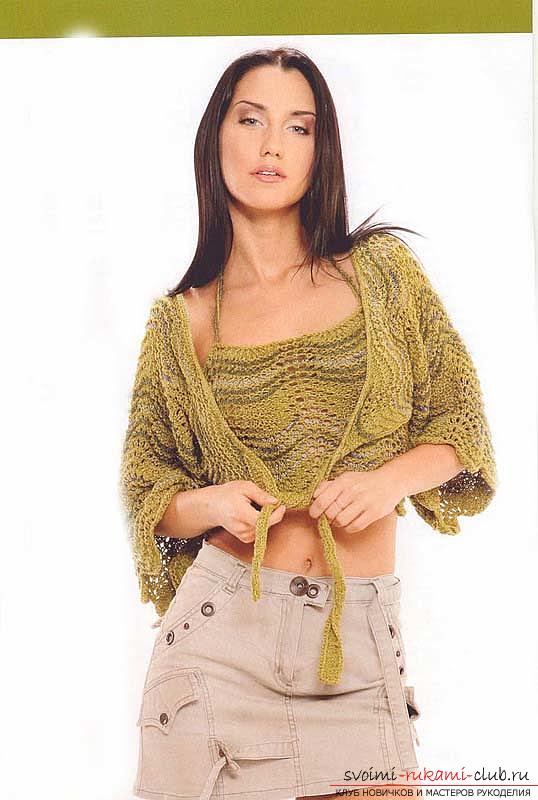 Using the “peacock tail” pattern YouYou can knit many different wavy patterns if you make small adjustments to its pattern. So, for example, try making the number of rows in the repeat a little larger, or “dilute” the rows. purl stitches for wave-forming rows or any other rows. Partial application of the pattern is possible. Now let's take a close look at the specifics of knitting one of the types of wavy openwork patterns. This one will differ from the previous pattern only in that in decreases between the loops you need to create a yarn over, and to ensure a constant number of loops in a row, you will need to knit not 2, but 3 loops together.
Using the “peacock tail” pattern YouYou can knit many different wavy patterns if you make small adjustments to its pattern. So, for example, try making the number of rows in the repeat a little larger, or “dilute” the rows. purl stitches for wave-forming rows or any other rows. Partial application of the pattern is possible. Now let's take a close look at the specifics of knitting one of the types of wavy openwork patterns. This one will differ from the previous pattern only in that in decreases between the loops you need to create a yarn over, and to ensure a constant number of loops in a row, you will need to knit not 2, but 3 loops together.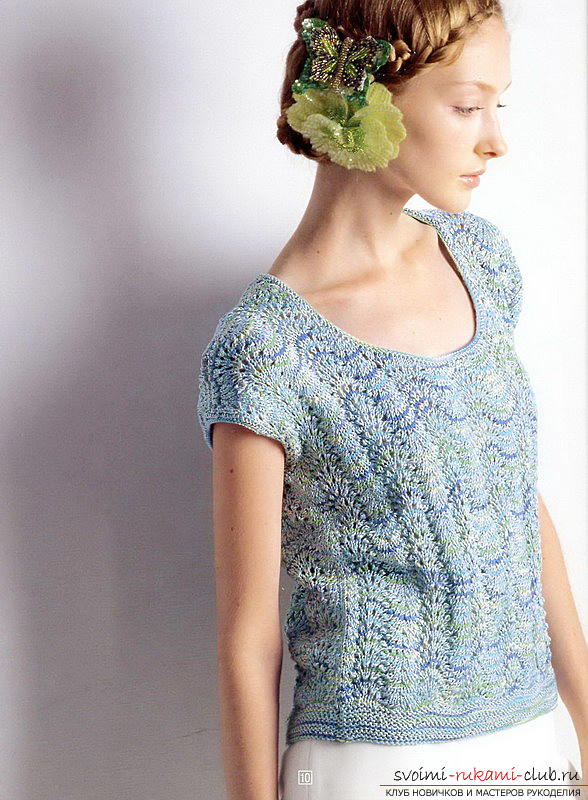 Considering that the pattern contains stripes ofpurl stitches, then you need to create the first rows using garter stitch: from the first to the sixth rows, all the stitches are knit stitches (and in the purl rows we also knit knit stitches), starting to make the fabric from the “wave” itself. Considering the content of the pattern, knitting in this case should begin from the fifth row. Then the seventh row: knit stitches. Purl the eighth row. After that, following the pattern, we make the thirteenth row: yarn over, knit one knit stitch, repeat this sequence three times. Then we alternate the yarn over, three loops knitted together – six times, and the combination of yarn over and knit stitch also needs to be repeated six times. We complete the row with a triple yarn over and knit stitch combination. Purl stitches should be created on the purl rows.
Considering that the pattern contains stripes ofpurl stitches, then you need to create the first rows using garter stitch: from the first to the sixth rows, all the stitches are knit stitches (and in the purl rows we also knit knit stitches), starting to make the fabric from the “wave” itself. Considering the content of the pattern, knitting in this case should begin from the fifth row. Then the seventh row: knit stitches. Purl the eighth row. After that, following the pattern, we make the thirteenth row: yarn over, knit one knit stitch, repeat this sequence three times. Then we alternate the yarn over, three loops knitted together – six times, and the combination of yarn over and knit stitch also needs to be repeated six times. We complete the row with a triple yarn over and knit stitch combination. Purl stitches should be created on the purl rows.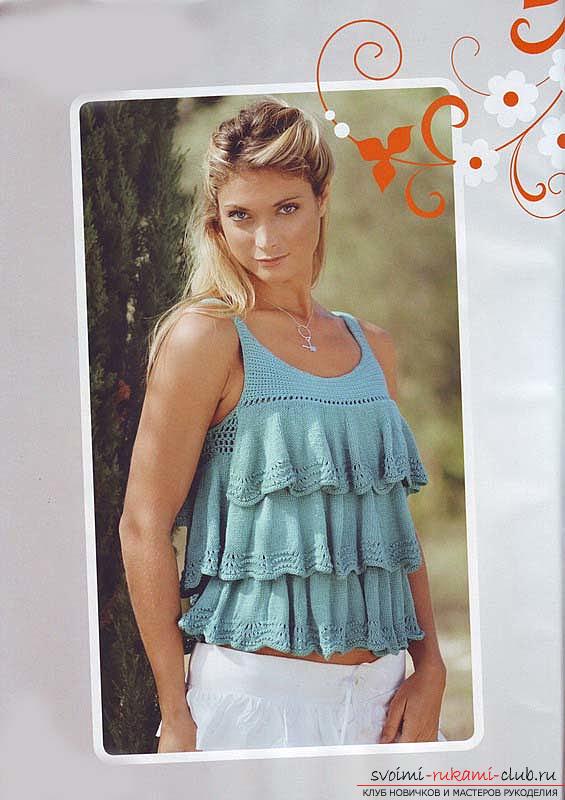 We repeat the fifteenth and sixteenth rows of the patternby analogy with the two previous rows. After this, we switch to garter stitch and use it to knit six rows. In each row (in purl rows too) we knit exclusively knit stitches: according to the pattern, these are the seventeenth – twenty-second row. Next, following the diagram, we repeat everything from the first row.
We repeat the fifteenth and sixteenth rows of the patternby analogy with the two previous rows. After this, we switch to garter stitch and use it to knit six rows. In each row (in purl rows too) we knit exclusively knit stitches: according to the pattern, these are the seventeenth – twenty-second row. Next, following the diagram, we repeat everything from the first row.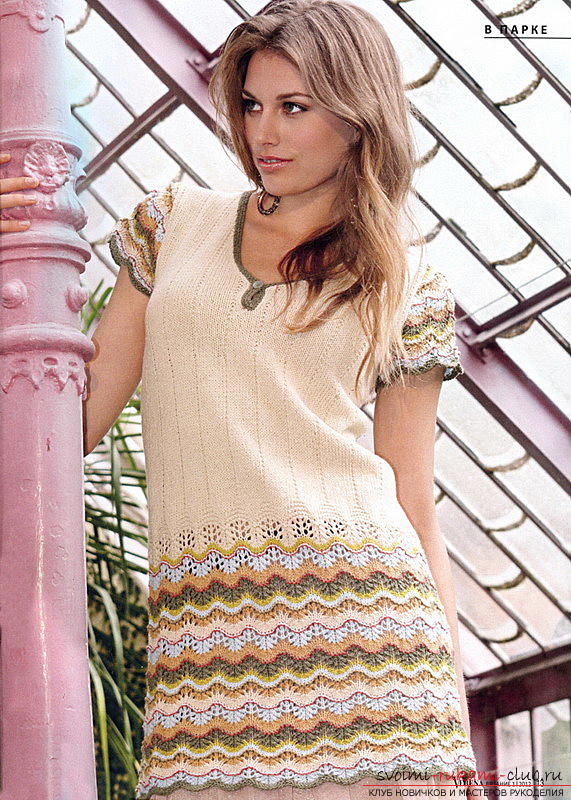 For those who are ready to experiment,We recommend using the “peacock tail” pattern. knit alternate areas by adding and decreasing stitches in a checkerboard pattern. At the end you will have a completely different pattern and at the same time a very unusual one. This pattern can also be modified, working to create new spectacular openwork patterns. Here are some more knitting patterns for wavy patterns:
For those who are ready to experiment,We recommend using the “peacock tail” pattern. knit alternate areas by adding and decreasing stitches in a checkerboard pattern. At the end you will have a completely different pattern and at the same time a very unusual one. This pattern can also be modified, working to create new spectacular openwork patterns. Here are some more knitting patterns for wavy patterns:
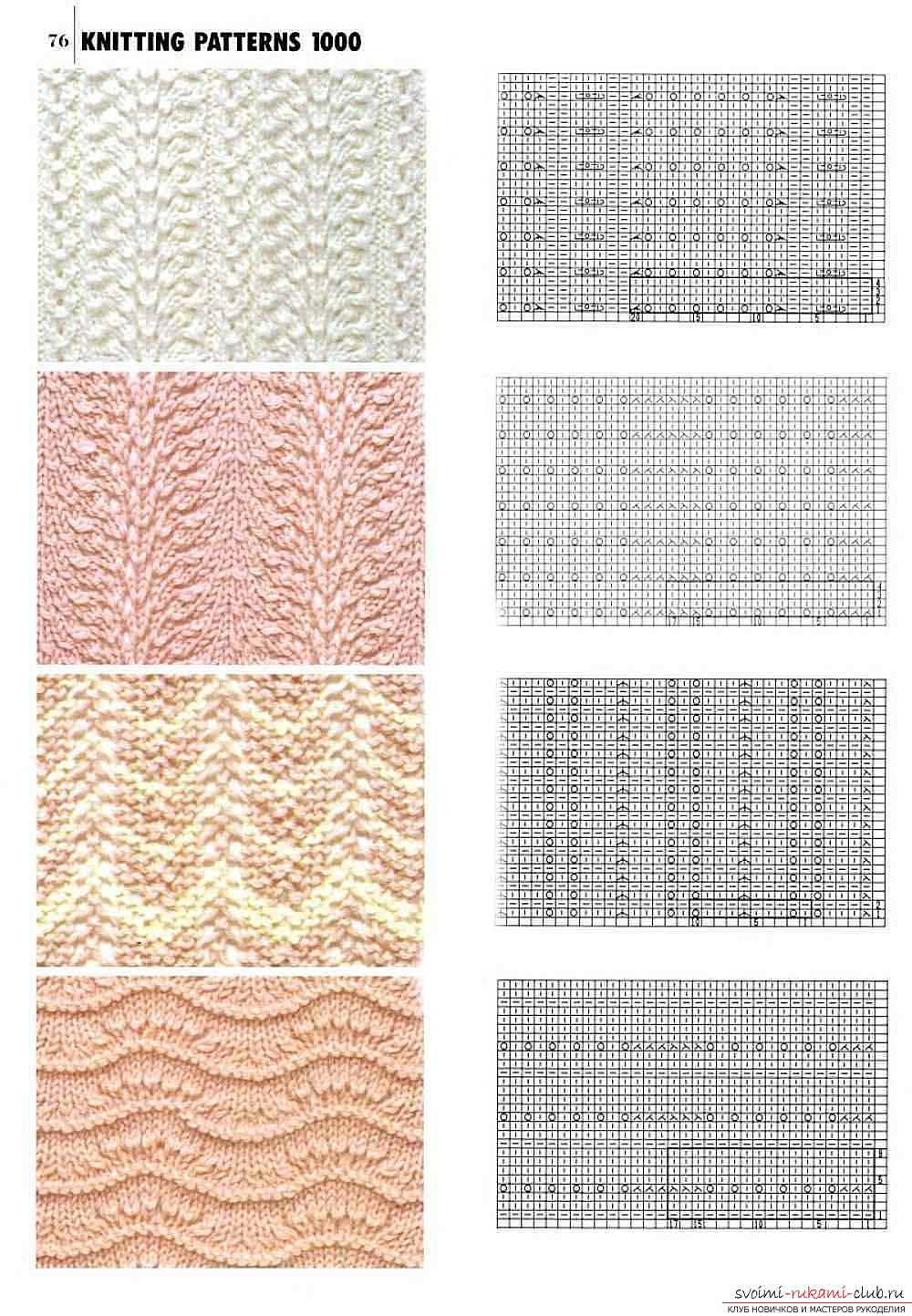 Direction for using the peacock patterntail" will depend entirely on you. Try working in a horizontal knitting direction or with changing directions, and you will see what an interesting, fresh look the model will have. Using the bias knitting technique or modifying the openwork wavy pattern itself also contributes to the creation of new exclusive patterns.
Direction for using the peacock patterntail" will depend entirely on you. Try working in a horizontal knitting direction or with changing directions, and you will see what an interesting, fresh look the model will have. Using the bias knitting technique or modifying the openwork wavy pattern itself also contributes to the creation of new exclusive patterns.
